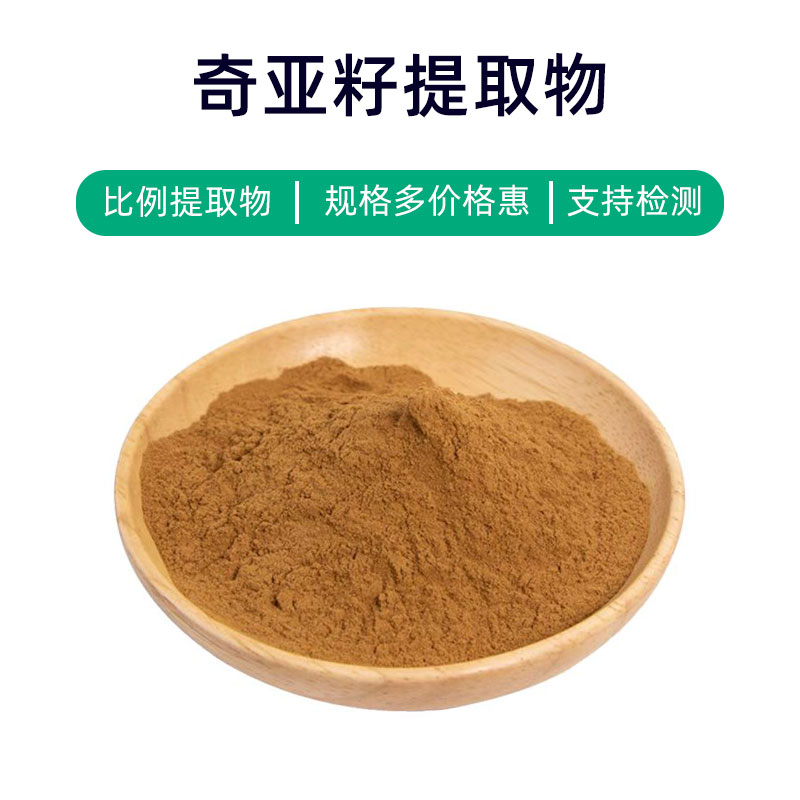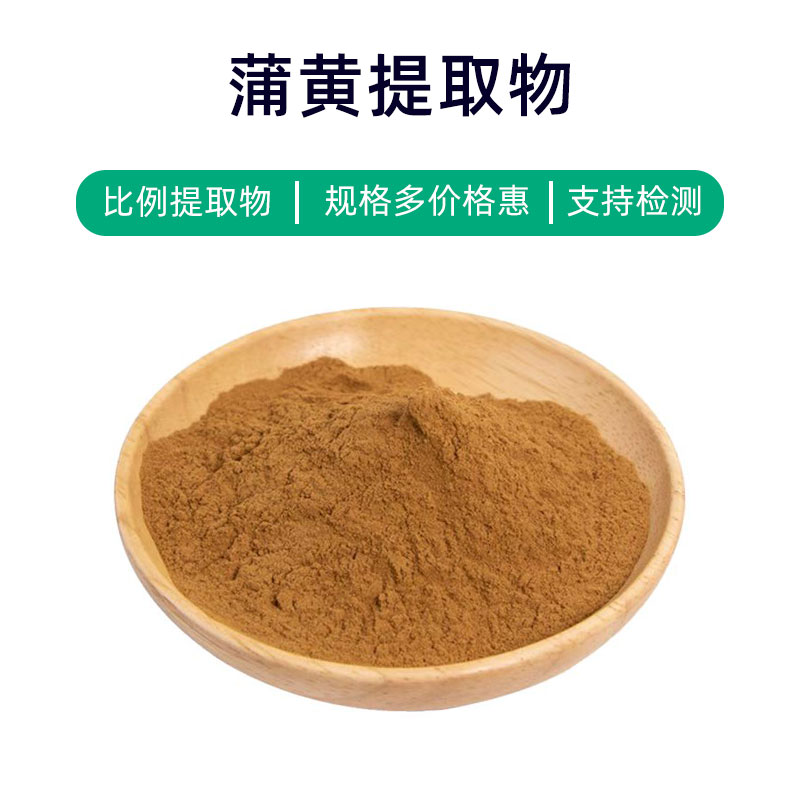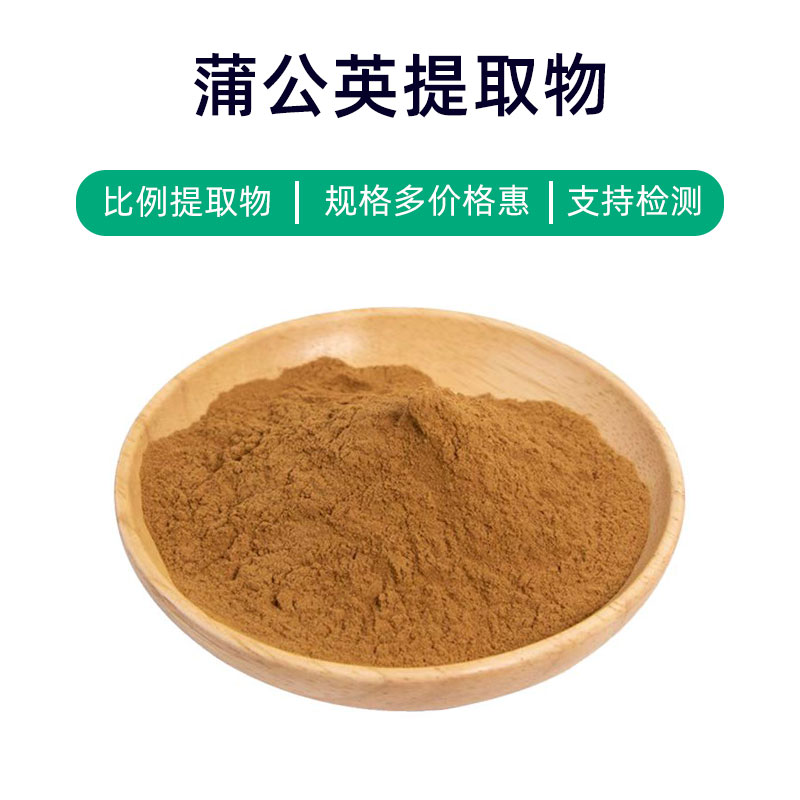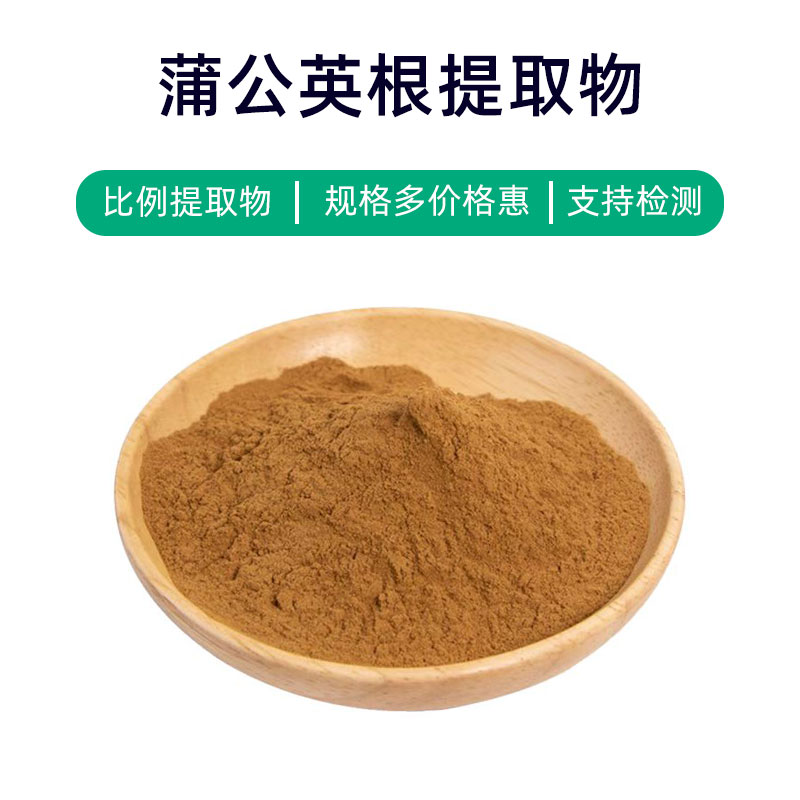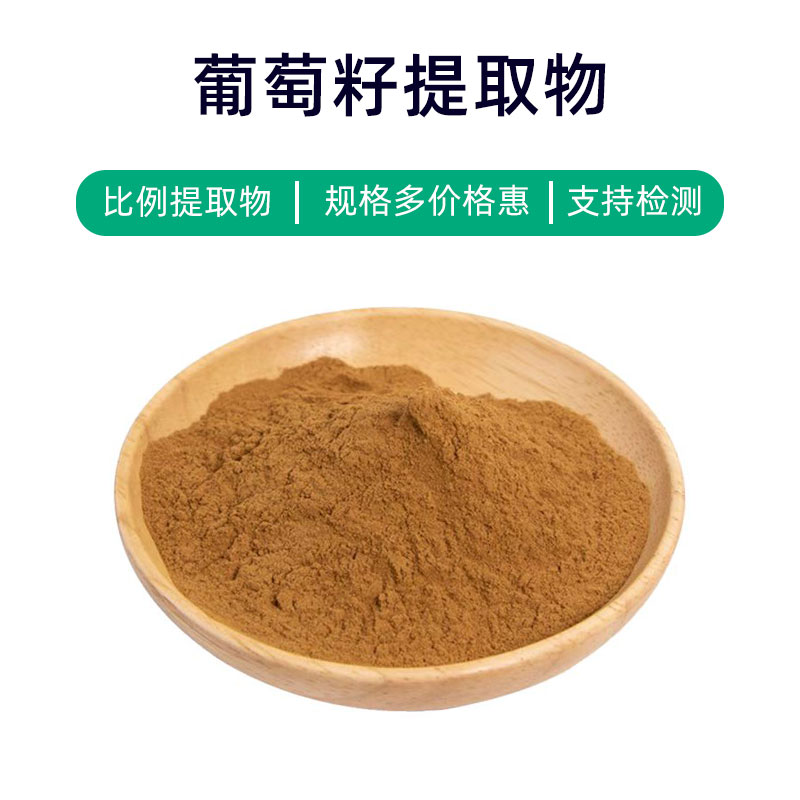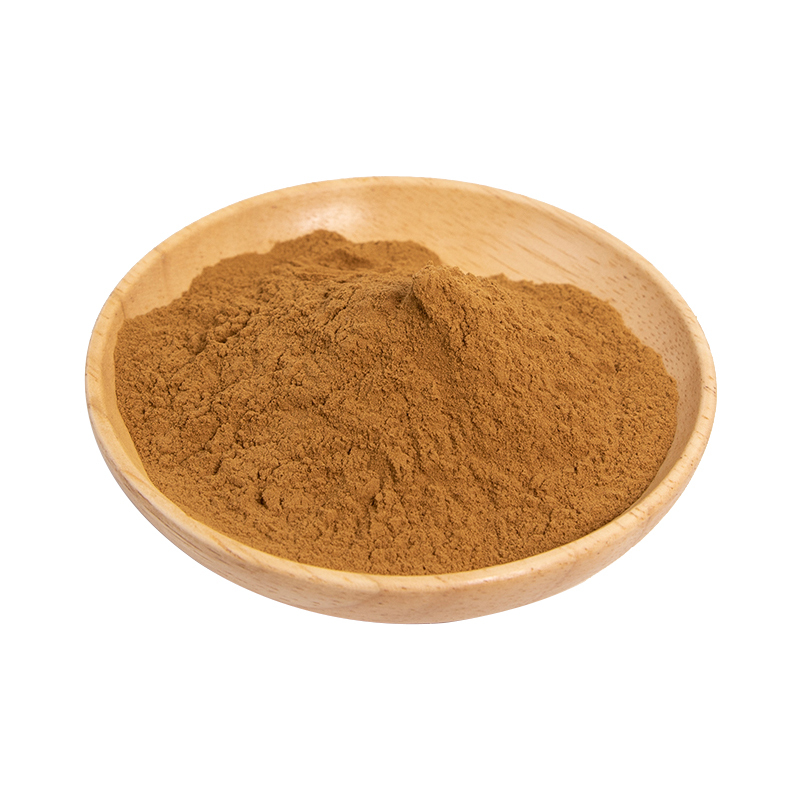Introduction to Chebulae Fructus Extract
Chebulae Fructus Extract is a natural plant extract derived from the fruit of the Chebula tree, primarily containing rich tannins, polyphenolic compounds, and flavonoids. This extract is extensively used across the fields of medicine, dietary supplements, food, and cosmetics.
Chebulae Fructus Extract has multiple health benefits. First, it contains abundant tannins, which have astringent and anti-diarrheal properties, making it useful for treating digestive disorders such as diarrhea and oral ulcers. Second, polyphenolic compounds exhibit antioxidant and anti-inflammatory effects, helping to boost the immune system and prevent diseases. Additionally, the flavonoids found in Chebulae Fructus Extract are believed to have anti-tumor, lipid-lowering, and blood sugar-lowering effects, serving as a supportive treatment for cardiovascular diseases and diabetes.
In the field of medicine, Chebulae Fructus Extract is commonly used to prepare medications for digestive issues, anti-inflammatory drugs, and antioxidants. In dietary supplements, it is formulated into capsules and tablets to promote health and strengthen immunity. In food, it acts as a natural antioxidant and preservative, extending shelf life and enhancing nutritional value. In cosmetics, it is often incorporated into skincare and anti-aging products, providing moisturizing, anti-wrinkle, and spot-reducing benefits.
Overall, as a natural plant extract, Chebulae Fructus Extract offers myriad health benefits and is widely applied in medicine, dietary supplements, food, and cosmetics, helping to ensure health and beauty.
Production Process for Chebulae Fructus Extract
The production process for Chebulae Fructus Extract involves the following steps:
- Raw Material Preparation: Select high-quality Chebula fruits, removing impurities and inferior fruits.
- Grinding: Cleaned Chebula fruits are ground to increase extraction efficiency.
- Extraction: Use suitable solvents (such as ethanol or water) for extraction, employing methods like maceration or ultrasonic extraction.
- Filtration: Filter the extract through a mesh or filter paper to remove solid particles and impurities, obtaining a clear extract.
- Concentration: Remove the solvent from the extract through vacuum concentration or evaporation, yielding concentrated Chebula Extract.
- Crystallization: Crystallize the concentrated extract to enhance purity and stability.
- Drying: Dry the crystallized extract to reduce moisture content, increasing stability and shelf life.
- Packaging: Package the dried Chebula Extract in a sealed container to protect against moisture and oxygen, preserving quality and stability.
- Quality Control: Conduct quality testing on the packaged product to assess appearance, physical and chemical properties, and active ingredient content, ensuring compliance with standards.
- Storage: Store compliant Chebula Extract in a cool, dry place, away from direct sunlight and high temperatures to ensure product quality.
Effects and Side Effects of Chebulae Fructus Extract
As a natural herbal extract, Chebulae Fructus Extract is widely used in traditional medicine and is gaining attention in modern pharmaceuticals. Its main effects include:
- Digestive Health: Chebulae Fructus Extract aids in warming the stomach and enhancing digestion, useful for symptoms like stomach pain, dyspepsia, and bloating.
- Anti-Inflammatory Pain Relief: It contains multiple bioactive compounds with anti-inflammatory and analgesic properties, effective for relieving pain from various inflammatory conditions.
- Antioxidant Properties: Rich in antioxidants like polyphenols and vitamin C, it neutralizes free radicals and slows cellular aging.
- Blood Lipid Regulation: Active components can adjust lipid metabolism, lowering cholesterol and triglyceride levels, which helps prevent and manage hyperlipidemia.
- Immune System Support: Some constituents enhance the immune response, increasing resistance to infections and diseases.
- Liver Protection: Research suggests Chebula Extract may protect the liver, ameliorating damage and promoting cell regeneration, potentially aiding in hepatitis and other liver issues.
- Blood Sugar Regulation: Certain studies indicate that active compounds can help control blood sugar levels, supporting diabetes management.
- Antimicrobial and Anti-Inflammatory: Some compounds exhibit antibacterial and anti-inflammatory actions, helpful for treating skin infections and inflammation.
Chebulae Fructus Extract is generally considered a mild herbal supplement with few side effects, though individual reactions may vary. Long-term or excessive use can lead to gastrointestinal discomfort, dizziness, or other adverse effects. Therefore, it is advisable to consult a doctor or pharmacist before use and follow their recommendations to avoid overuse or long-term continuous application.
Application Scenarios and Dosage of Chebulae Fructus Extract
As a natural plant extract with diverse medicinal value, Chebulae Fructus Extract is widely used in medicine, food, and cosmetics. Here are its application scenarios and recommended dosages across different fields:
- Medical Applications:
- Digestive Disorders: Used for conditions like gastritis or stomach ulcers. Recommended oral dosage is 3-6 grams, divided into 2-3 doses daily.
- Blood Lipid and Sugar Regulation: As a supplement for cardiovascular and diabetes treatment, 3-9 grams is suggested per dose, taken 2-3 times a day.
- Immune Support: For boosting immunity, a dosage of 3-9 grams is advisable, divided into 2-3 doses.
- Food Applications:
- Health Supplement Additive: Commonly added to dietary supplements to support digestion and regulate blood lipids and sugars, with a recommended daily intake of 3-6 grams.
- Functional Foods: Can be used as a flavoring or health-enhancing component in health drinks and nutritional products.
- Cosmetic Applications:
- Skincare Formulations: With antioxidant and anti-inflammatory properties, Chebula Extract is included in creams, lotions, and masks; typical application is to evenly apply a suitable amount to the face.
- Hair Care Products: It can be added to shampoos and conditioners for promoting hair growth and reducing dandruff, depending on the product formulation.
- Dosage Considerations:
- When using Chebulae Fructus Extract, dosage should be determined according to product type and intended use, following medical or professional advice.
- For medicinal use, it is best to use under a doctor's guidance and adhere to prescribed dosages.
- In food and cosmetic applications, abide by product formulation guidelines to avoid excessive use, which could lead to adverse reactions.
In summary, Chebulae Fructus Extract is a valuable natural plant extract with extensive applications in medicine, food, and cosmetics, but it is essential to observe dosage and application guidelines to prevent adverse effects.
Introduction to the Source Plant of Chebulae Fructus Extract, Distribution, and Growth Environment
Chebula (Scientific Name: Chebulae Fructus), also known as “Chebula Fruit” or “Black Fruit,” is a common medicinal plant with significant therapeutic value. Below is information about the source plant, its distribution, and growth environment:
Plant Description:
Chebula is an evergreen tree belonging to the Combretaceae family. It typically thrives in subtropical and tropical regions, making it a widely distributed species.
Distribution:
Chebula is native to Asia, mainly found in countries and regions such as China, India, Nepal, Bangladesh, and Sri Lanka. In China, it grows predominantly in Yunnan, Guangxi, Guangdong, and Fujian.
Growth Environment:
Chebula prefers moist environments and is commonly found in hillsides, river valleys, and altitudes of 500 to 2000 meters. It is adaptable to different soil types, thriving in sandy, loamy, and clay soils. Additionally, it is often located at forest edges, in shrublands, and along riverbanks.
Chebula trees can reach heights of up to 10 meters, with a sparse, rounded crown. The bark is gray-brown and the trunk is often twisted. Leaves are long oval or elliptical, thick and leathery, and dark green. The flowers are small and inconspicuous, white or light yellow, typically blooming in spring. The fruit is a drupe that is oval or spherical, maturing to a reddish-brown or purplish-black color, containing seeds.
Chebula prefers warm, humid weather with plenty of sunlight and adequate rainfall, which are vital for its growth. It requires high humidity and is commonly found in areas with significant rainfall or abundant water sources such as river valleys and hills. Furthermore, Chebula is relatively shade-tolerant, capable of growing in cooler settings, although growth rates may be somewhat affected.
Overall, Chebula is a highly adaptable and widely distributed medicinal plant, primarily growing in subtropical and tropical regions, favoring warm, moist climates and typically found in mountainous and hilly areas at elevations of 500 to 2000 meters.
Processing and Storage of Chebulae Fructus Extract
The processing of Chebulae Fructus Extract generally includes the following steps: First, harvested Chebula fruits are cleaned and air-dried to remove impurities and moisture; then, the dried fruits are ground into powder; afterward, appropriate extraction methods (such as aqueous or alcoholic extraction) are used to isolate target components; finally, after concentration, filtration, and drying, the Chebulae Fructus Extract product is obtained.
When storing Chebulae Fructus Extract, it should be kept in a cool, dry, and well-ventilated area, avoiding direct sunlight and high temperatures. Contact with harmful gases and moisture should be prevented to maintain quality and stability. It is typically stored in sealed containers to guard against air oxidation and moisture intrusion, extending its shelf life.
Monica Sun is a seasoned expert in the plant extraction industry with over a decade of experience in research and production. She specializes in the extraction and purification of plant active ingredients, focusing on driving innovation in natural product applications. Monica has participated in the development of multiple functional plant extracts, delivering high-value natural raw material solutions for the health food, pharmaceutical, and dietary supplement sectors.









